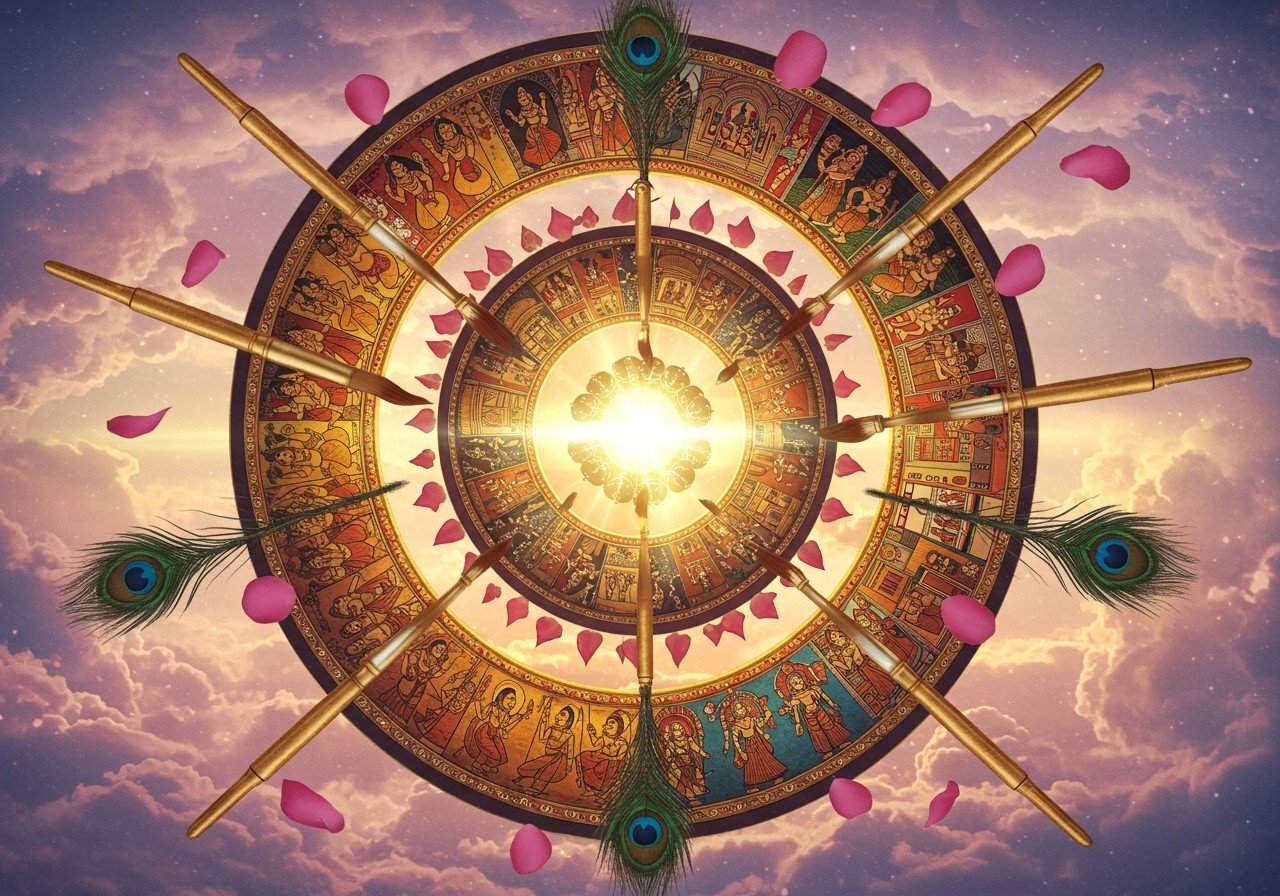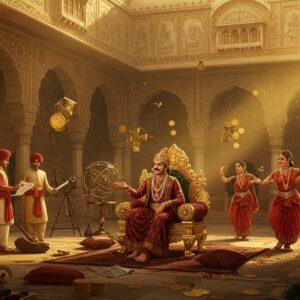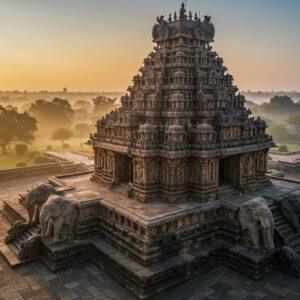
Indian painting is a rich tapestry woven with thousands of years of history and cultural evolution. This art form is not just a visual representation but a reflection of India’s diverse cultural heritage and traditions. Explore the multifaceted history of Indian painting, from ancient times to its modern interpretations. Understand the significance of art in Indian society and how it has influenced various cultural practices. Delve into the key styles and techniques that have defined Indian painting across different eras, and appreciate the vibrant colors and intricate details that make these artworks timeless.
Ancient Indian Painting (3rd Millennium BCE – 8th-10th Century AD)
Discover the earliest forms of Indian painting, including prehistoric rock art in Bhimbetka caves dating back approximately 30,000 years. These artworks offer a glimpse into early human life, depicting animals and human forms using natural pigments. The frescoes of Ajanta and Ellora, created between the 2nd century BC and the 8th-10th century AD, showcase religious themes from Buddhist, Jain, and Hindu religions with intricate details. Buddhism and Jainism greatly influenced ancient Indian painting, using art for storytelling and spiritual expression. Artists used natural pigments and materials, highlighting their skill and craftsmanship. Patronage by Indian rulers played a significant role in the growth of art and culture during ancient times. Explore the profound impact of Hinduism on Indian art and culture.
Medieval Indian Painting Traditions (16th-19th Century)
During the medieval period, new styles like Mughal, Rajput, and Pahari paintings emerged. Mughal paintings, influenced by Persian art, are known for detailed miniature portraits and flourished from the 16th to the 19th century. Rajput paintings, featuring bold colors and Hindu mythology themes, flourished in Rajasthan. The Pahari school developed in North India’s hills, characterized by delicate brushwork and romantic themes. Regional cultures and local patronage shaped these distinct painting styles. The Mughal era, spanning from the 16th to the 19th centuries, significantly influenced Indian art, leading to a fusion of Persian miniatures with older Indian traditions. Discover how the Ramayana has also profoundly influenced Indian art and literature.
Colonial Influence and Modern Indian Painting (Mid-19th Century Onwards)
British colonial rule, starting in the mid-19th century, introduced Western techniques to Indian art. The Bengal School of Art, led by Abanindranath Tagore, aimed to revive traditional forms and resist Western influences. In the 20th century, artists like Raja Ravi Varma blended Indian themes with European techniques. Art institutions and exhibitions helped promote Indian painting globally. Contemporary artists continue to draw from traditional styles while exploring new mediums. Learn more about celebrating festivals and rituals through art with our guide on Saraswati Puja and Basant Panchami.
Symbolism and Themes in Indian Painting
Indian painting often features recurring themes like religious motifs, nature, and human emotions. Symbols convey spiritual messages and cultural narratives. Mythology and folklore inspire artists across different periods. Color symbolism plays a crucial role, with each hue representing specific emotions or concepts. These themes have evolved, reflecting societal changes.
Preservation and Appreciation of Indian Painting
Efforts to preserve and restore traditional paintings include government initiatives and private collections. Museums and galleries in India and abroad showcase Indian art to a global audience. Challenges like climate control and funding constraints affect preservation efforts. Supporting these artistic traditions is crucial. For those interested in connecting with the divine feminine, explore our guide on Kali Ma devotion.
Get Traditional Art Supplies and Ritual Items at Poojn.in
Poojn.in supports Indian art traditions by offering essential supplies used in traditional Indian painting. We stock natural colors and materials that connect to India’s rich artistic heritage, including:
- Pure kumkum powder for traditional art: Experience the vibrancy and sacredness of this traditional pigment.
- Natural stone colors and minerals: Connect with the earth’s palette through these authentic and vibrant colors.
- Handcrafted paintbrushes made with traditional techniques: Enhance your artistic expression with tools crafted with care and precision.
- Cotton canvas and handmade papers: Choose from a variety of surfaces that complement traditional painting styles.
- Pure gold leaf for traditional painting: Add a touch of opulence and tradition to your artwork with genuine gold leaf.
These authentic materials help preserve the traditional methods of Indian painting. Our products maintain the sacred connection between art and spirituality in Indian culture. We carefully source materials that meet traditional standards while offering the convenience of online shopping. Visit poojn.in to browse our collection of traditional art supplies and ritual items. Maha Tirtha Gold Sindoor is one such example of a traditional ritual item available. We deliver across India with secure packaging to protect these precious materials. Our customer service team can help you select the right supplies for your traditional art needs.*Note: Product availability may vary. Please check the website for current stock and pricing.*
Conclusion: Embracing the Legacy of Indian Painting
Indian painting stands as a vibrant testament to the country’s rich cultural history and artistic brilliance. From the ancient cave paintings of Bhimbetka to the dynamic expressions of modern artists, this art form beautifully reflects India’s diverse influences and enduring traditions. Embracing the legacy of Indian painting means appreciating its timeless beauty and cultural importance. Whether through academic study, visiting museums, or supporting contemporary artists, each exploration deepens our understanding and connection to this artistic heritage. Let us cherish and preserve this legacy for future generations, ensuring that the stories and skills of Indian painting continue to inspire and resonate with the world. For more on India’s artistic history, you might find resources at The Archaeological Survey of India valuable as they focus on preserving India’s cultural heritage.


